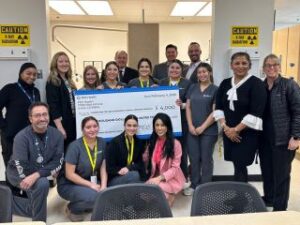 The emergence of superbugs could be a threat that alters the world of medicine as we know it, potentially throwing our society back into the Dark Ages. Fear not though, advancements in antibiotics are taking on these continually evolving microscopic monsters. As humans continue to fight infections with antibiotics, bacteria grow stronger and adapt, eventually becoming resistant. Two of the most common examples of this phenomenon are the MRSA virus and E. coli.1 Fighting these drug-resistant strains might be the next big challenge for medical professionals, and will likely challenge the pharm tech industry to quickly develop new antibiotics.
The emergence of superbugs could be a threat that alters the world of medicine as we know it, potentially throwing our society back into the Dark Ages. Fear not though, advancements in antibiotics are taking on these continually evolving microscopic monsters. As humans continue to fight infections with antibiotics, bacteria grow stronger and adapt, eventually becoming resistant. Two of the most common examples of this phenomenon are the MRSA virus and E. coli.1 Fighting these drug-resistant strains might be the next big challenge for medical professionals, and will likely challenge the pharm tech industry to quickly develop new antibiotics.
What is a superbug?
A superbug is a strain of a disease that has become resistant to standard antibiotics. Methicillin-resistant Staphylococcus aureus, commonly referred to as MRSA, is one of the main superbug perpetrators. It has been widely theorized that MRSA and other diseases that continue to gain resistance to medicine could potentially make small infections deadly. This scenario would result in a danger to hospital environments and cause the need for mass quarantines.2 However, recent studies have suggested that this situation is a bit exaggerated, if not entirely unlikely. This of course then requires that new treatments are developed to stop superbugs from prospering.
Developments in treatment
Researchers at the University of Michigan recently published a study that determined the structure of an enzyme that is essential to the way we produce antibiotics. As a result, The researchers have successfully been able to map out a kind of microbial assembly line, which could be imperative to engineering medicines that effectively fight superbugs.3 As much as two-thirds of the drugs used currently are derived from natural ingredients, but this left scientists with little understanding of how microorganisms chemically fight infections.4 Now that the structure can be seen, scientists understand how microorganisms create pathogen-killing chemicals, and can use that knowledge for medicinal purposes. This blueprint will likely be one of the main tools for fighting superbugs in the future. In another study, scientists at McMaster University in Ontario were able to extract a fungus compound from soil samples that helps fight superbugs. The fungus prevents the spread of infection from drug-resistant organisms.5 The sample was used to disarm NDM-1, an enzyme that makes bacteria resistant to antibiotics.6 This research in some ways complements the work done by scientists at the University of Michigan by finding natural antibiotic methods. That is to say, fighting superbugs will likely benefit from both discoveries together, as the former focuses on engineering drugs to fight infections and the latter uses nature, which antibiotics are traditionally derived from.
What this means for modern medicine
Though this research is promising, superbugs are still an impending danger. Drug-resistant bacteria are already responsible for approximately 5,000 deaths each year in England alone.7 This figure might sound small, but the number of cases is continually growing, and endangers modern medicine on a broader level. In other words, if common infections can resist antibiotics and become fatal, modern medical procedures, including surgery, become unsafe. This is especially true in poor and developing countries. The pharmaceuticals industry has little need to focus on antibiotics as they are not drugs people take regularly, and therefore are not as profitable as more common drugs. This industry has seen several transformations in antibiotics over the past several decades, as bacteria have continually become too strong for the new drugs that are created. This is perhaps a portentous sign that even if new antibiotics are developed, it is only a matter of time before bacteria again become naturally resistant. 1“New Weapon in Fight Against ‘Superbugs'” by Ann Lukits. The Wall Street Journal. June 30, 2014. http://online.wsj.com/articles/new-weapon-in-fight-against-superbugs-1404175658 2“Antibiotic super factories are set to take on superbugs” by Graham Templeton. Geek. June 19, 2014. http://www.geek.com/science/antibiotic-super-factories-are-set-to-take-on-superbugs-1588738/ 3“Nature’s chem lab: How microorganisms manufacture drugs” University of Michigan. June 18, 2014. http://ns.umich.edu/new/multimedia/videos/22241-nature-s-chem-lab-how-microorganisms-manufacture-drugs 4“Nature’s chem lab: How microorganisms manufacture drugs” University of Michigan. June 18, 2014. http://ns.umich.edu/new/multimedia/videos/22241-nature-s-chem-lab-how-microorganisms-manufacture-drugs 5“Antibiotic super factories are set to take on superbugs” by Graham Templeton. Geek. June 19, 2014. http://www.geek.com/science/antibiotic-super-factories-are-set-to-take-on-superbugs-1588738/ 6“Antibiotic super factories are set to take on superbugs” by Graham Templeton. Geek. June 19, 2014. http://www.geek.com/science/antibiotic-super-factories-are-set-to-take-on-superbugs-1588738/ 7“Call for new generation of antibiotics to fight off superbugs” by Mark Tran. The Guardian. July 2, 2014. http://www.theguardian.com/society/2014/jul/02/call-new-generation-antiobiotics-fight-superbugs



